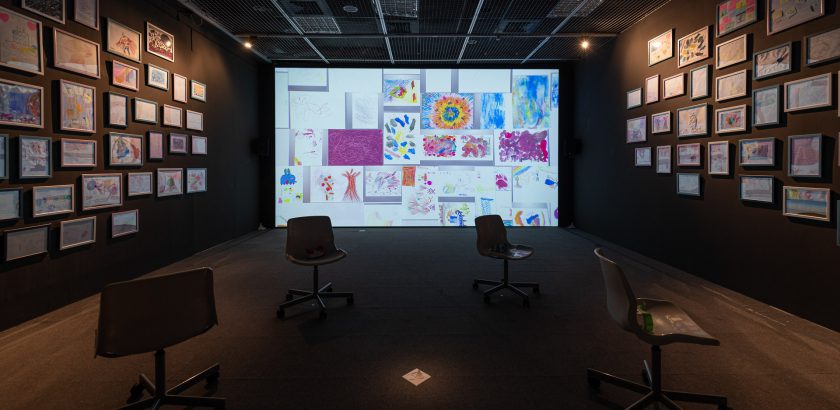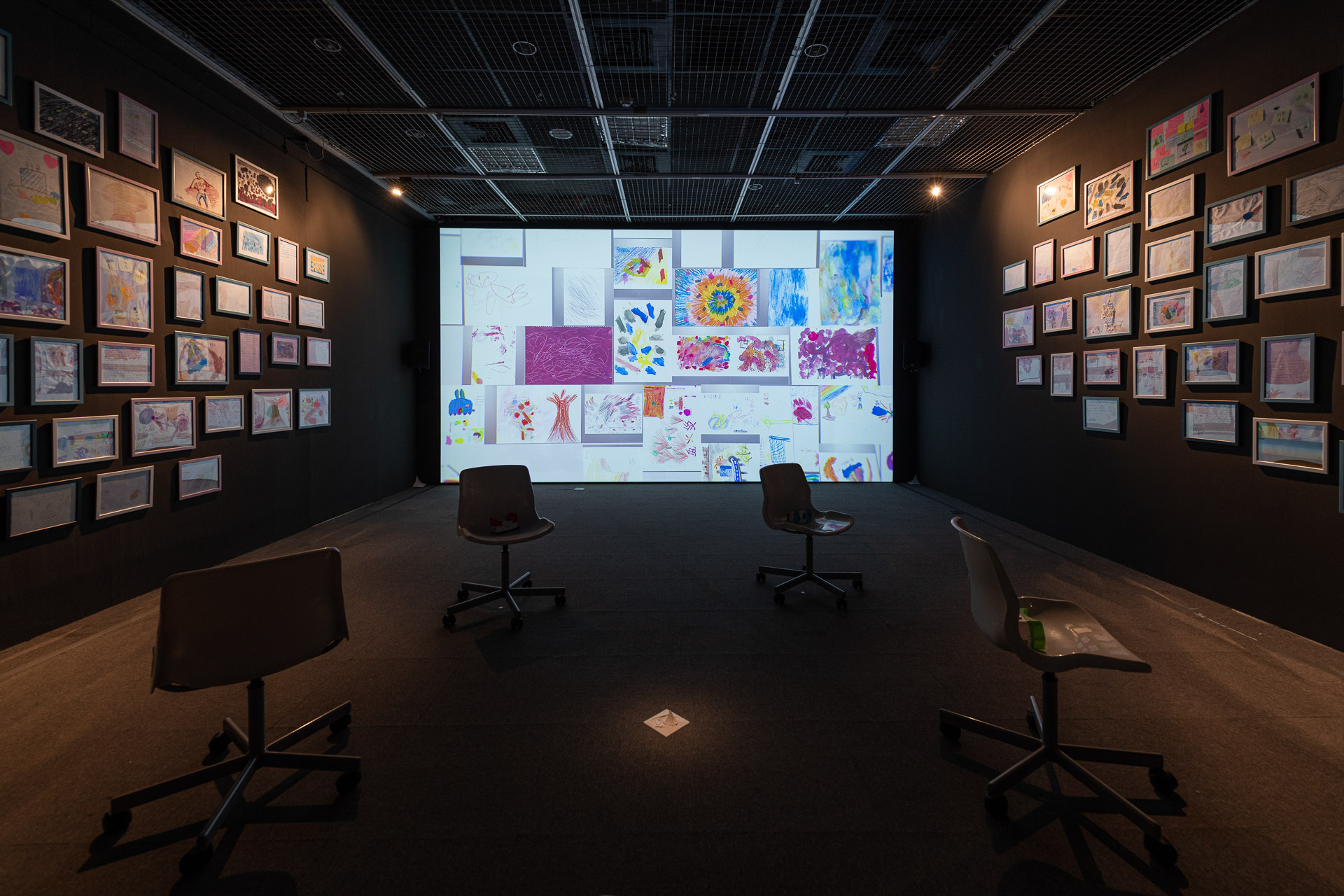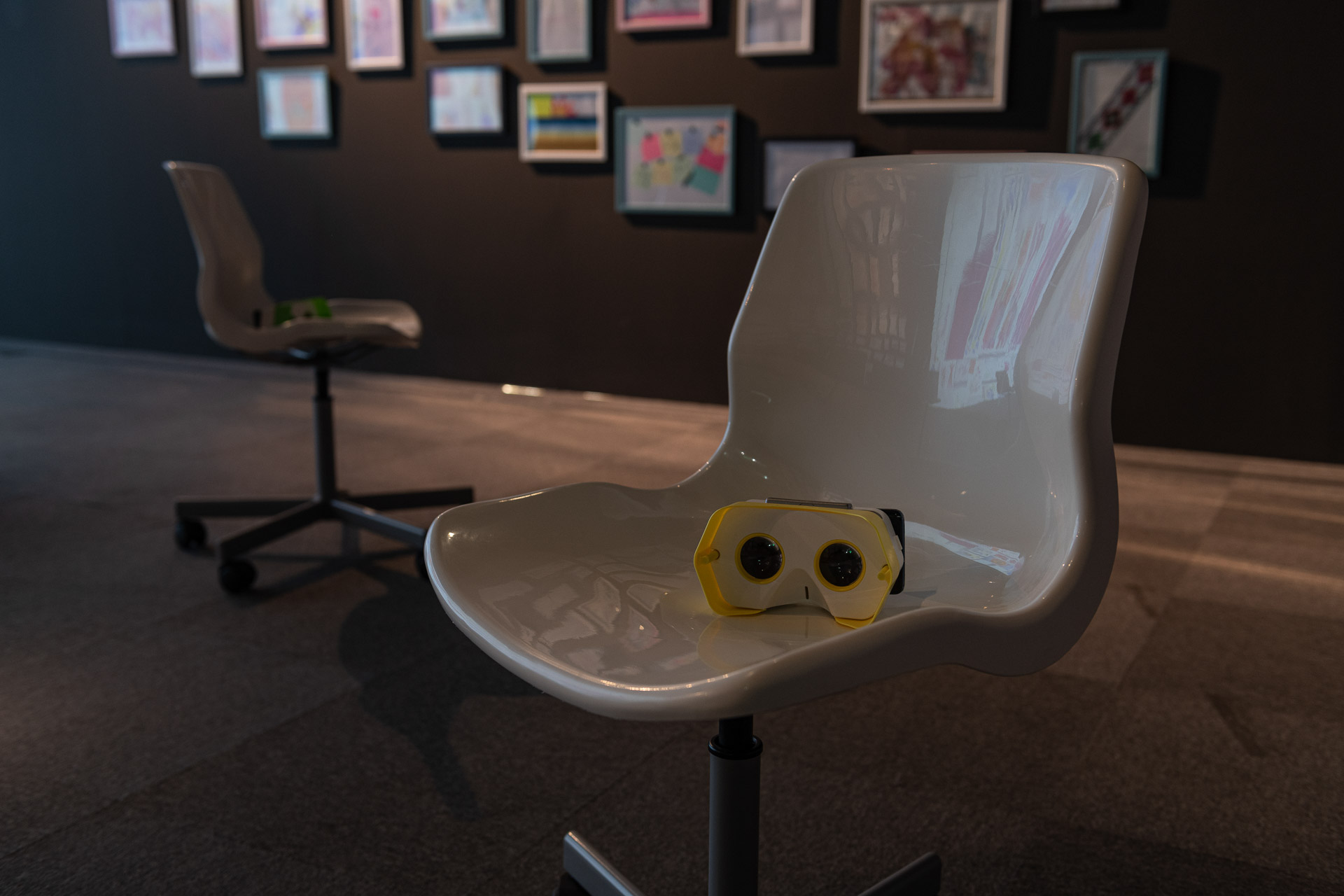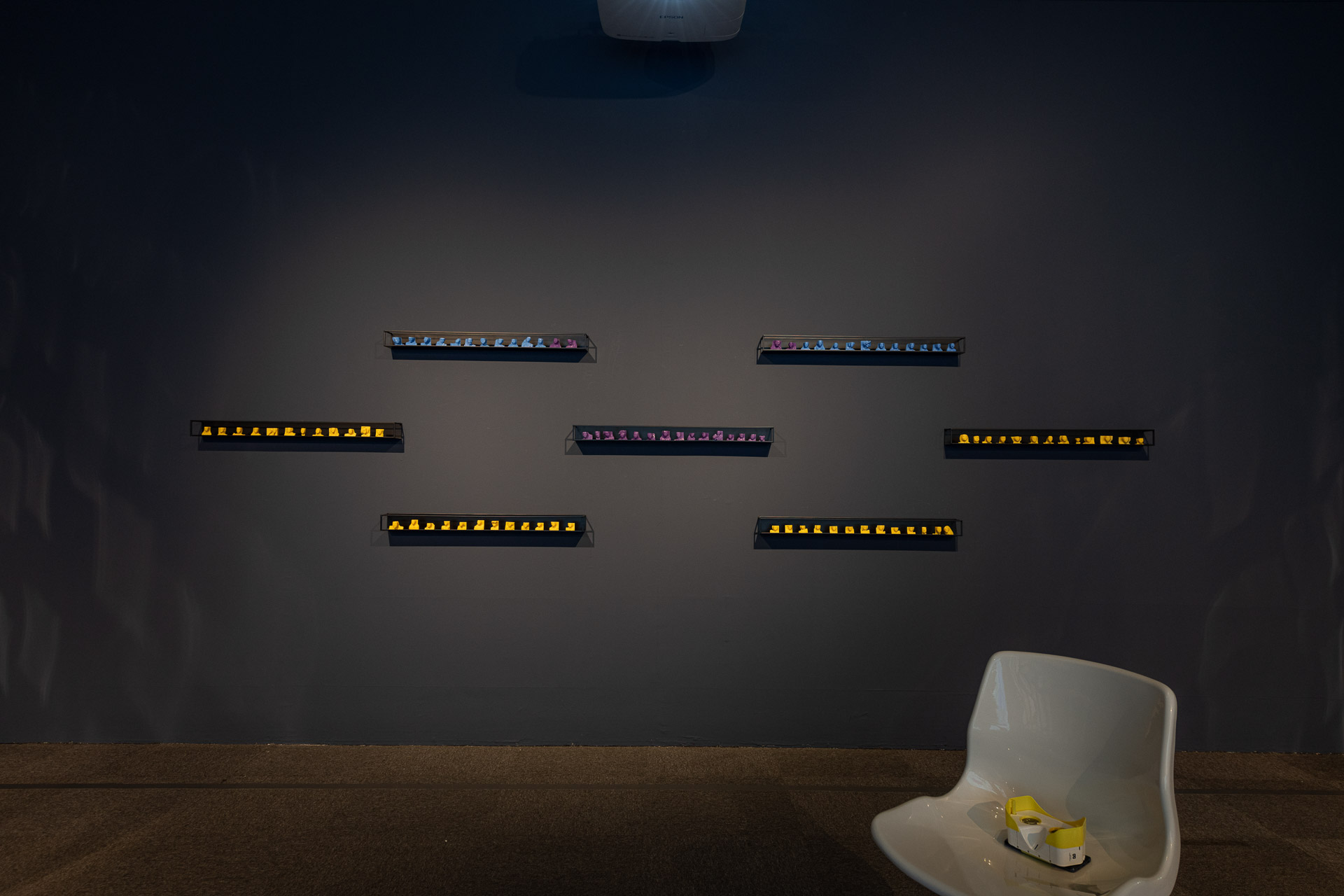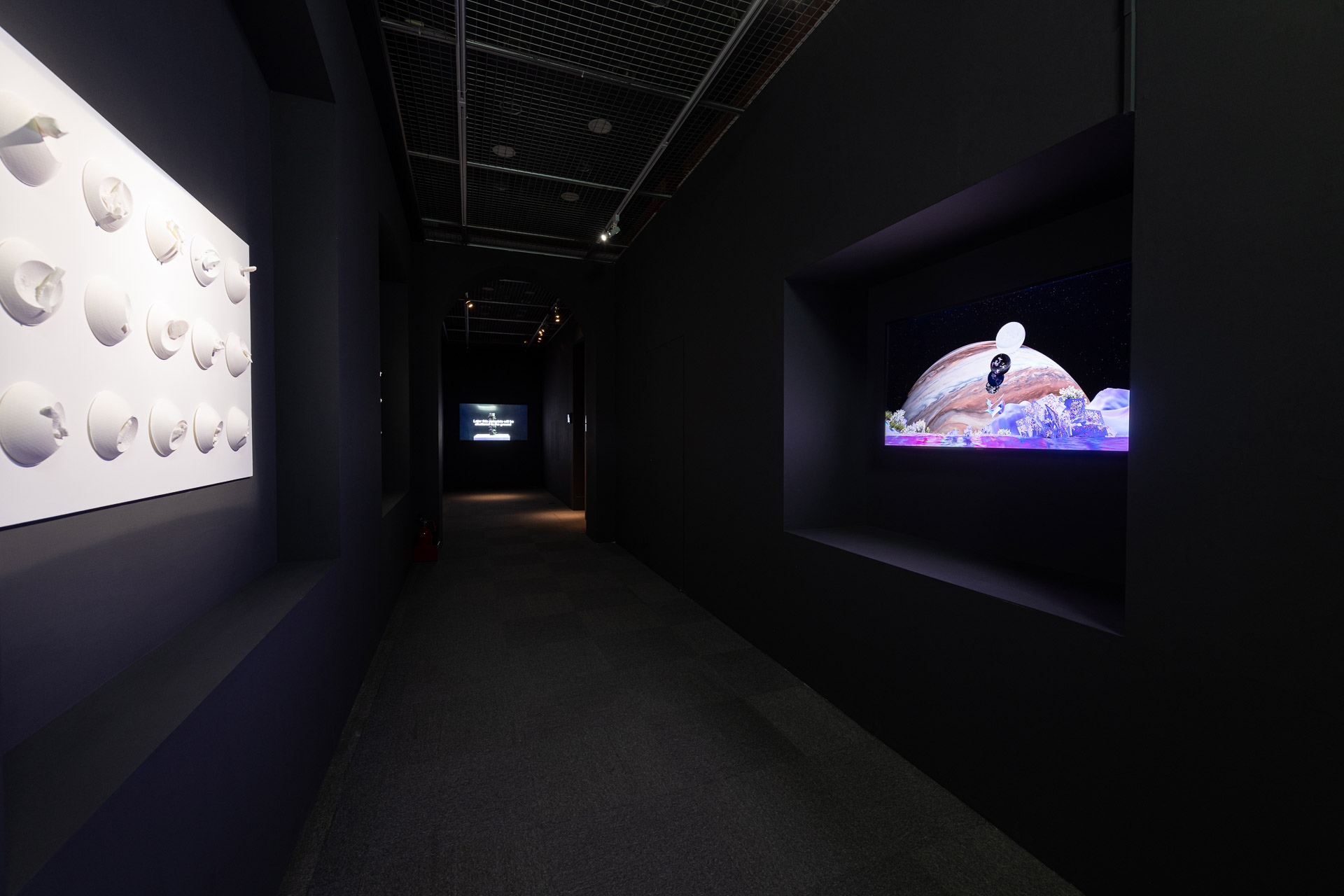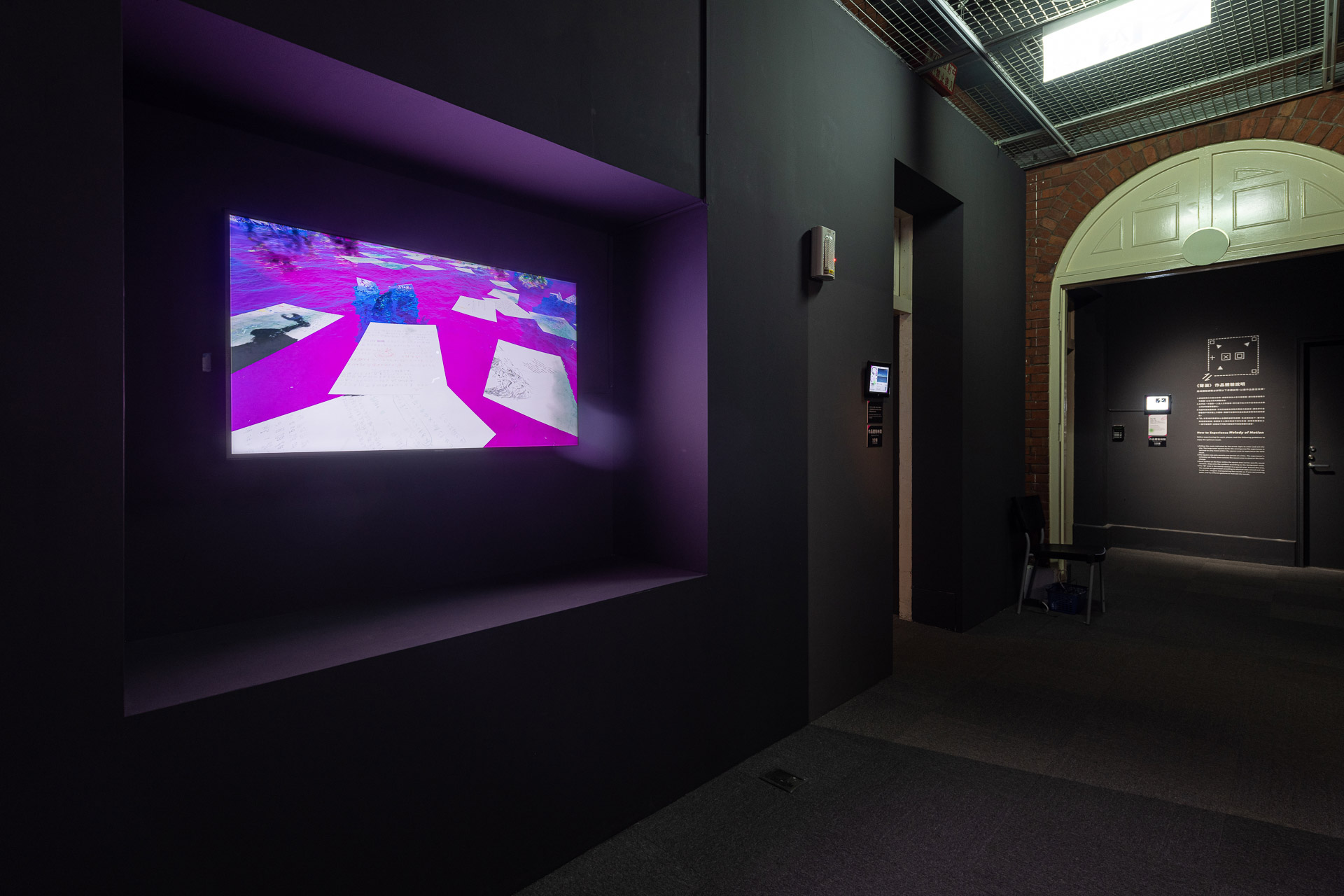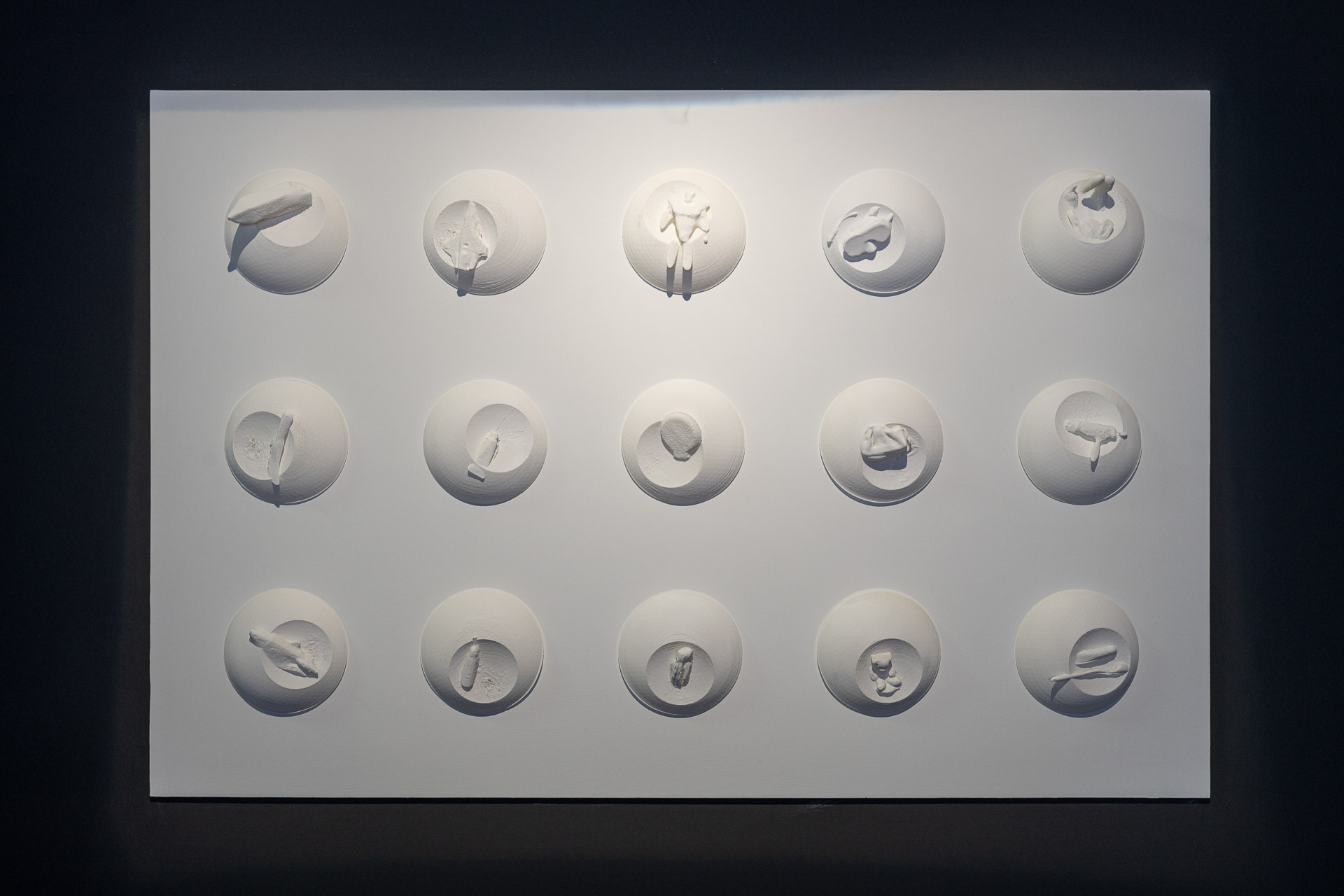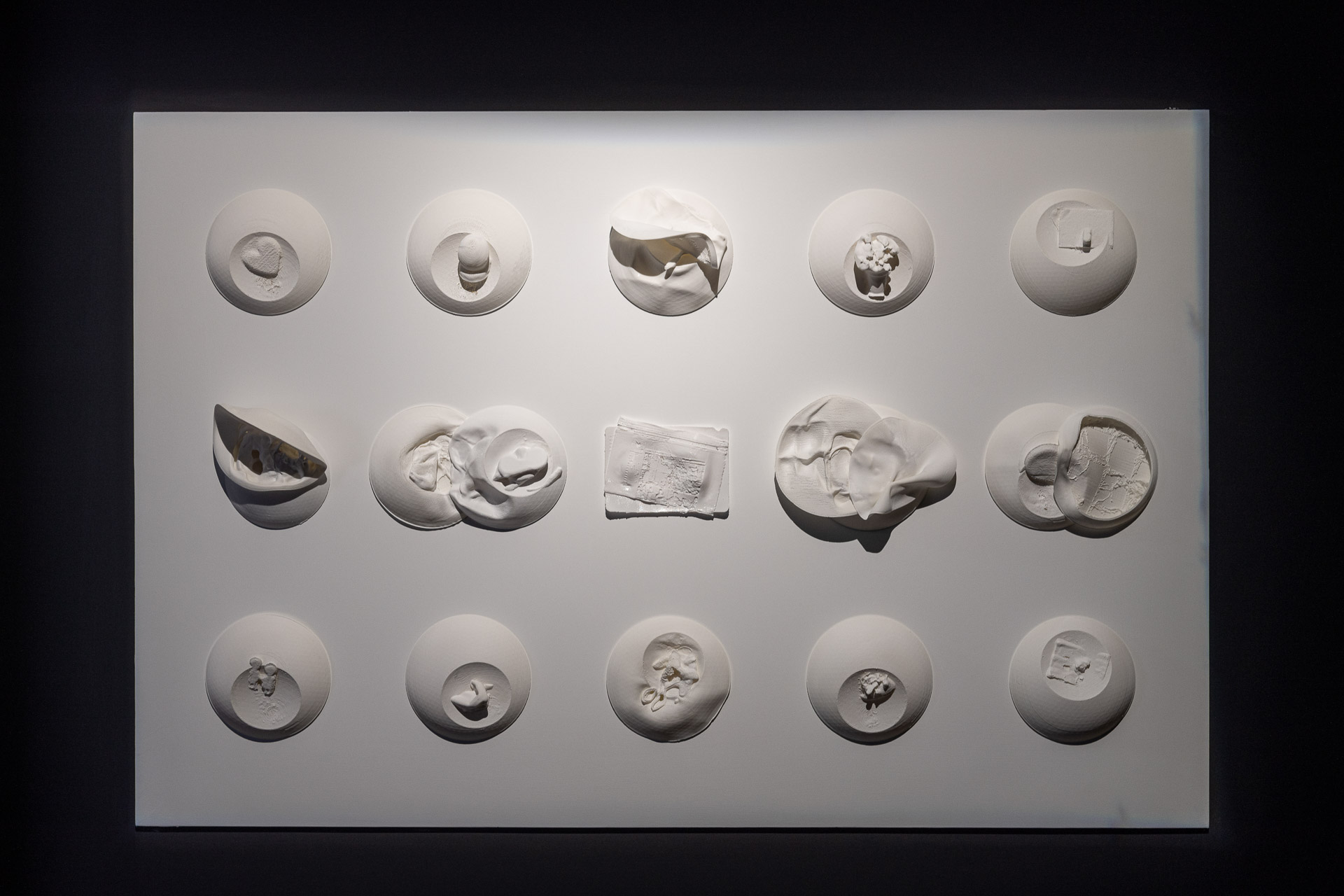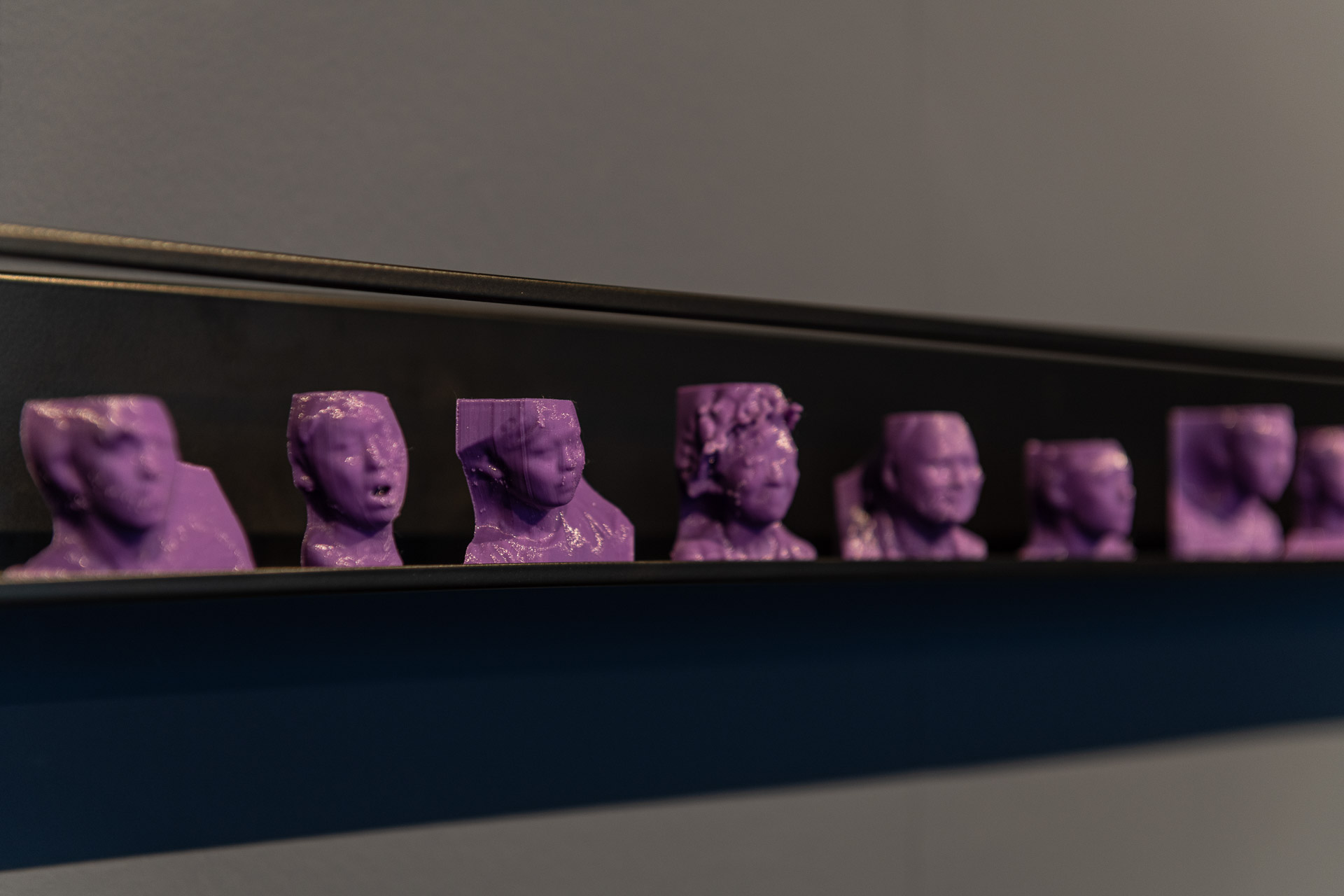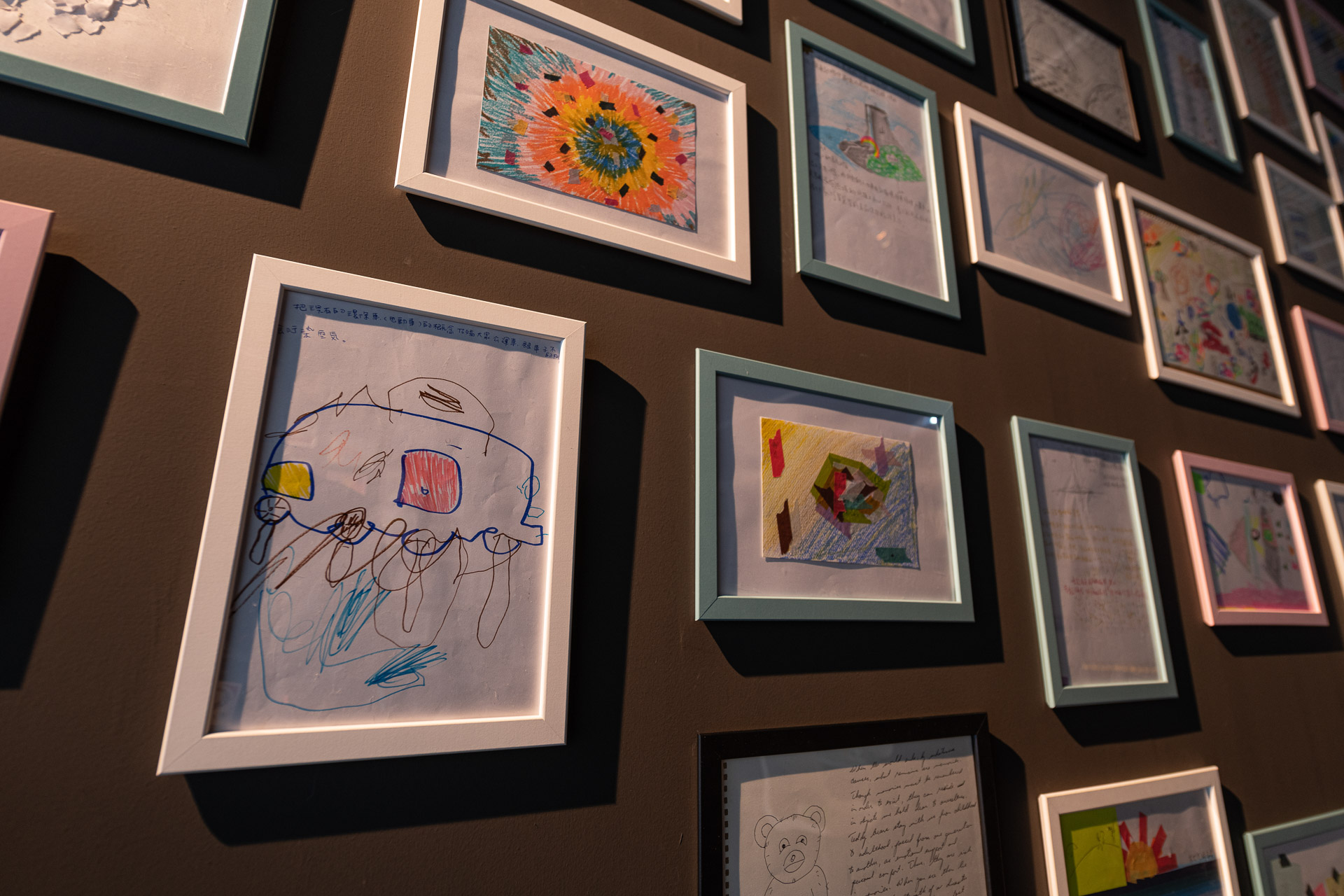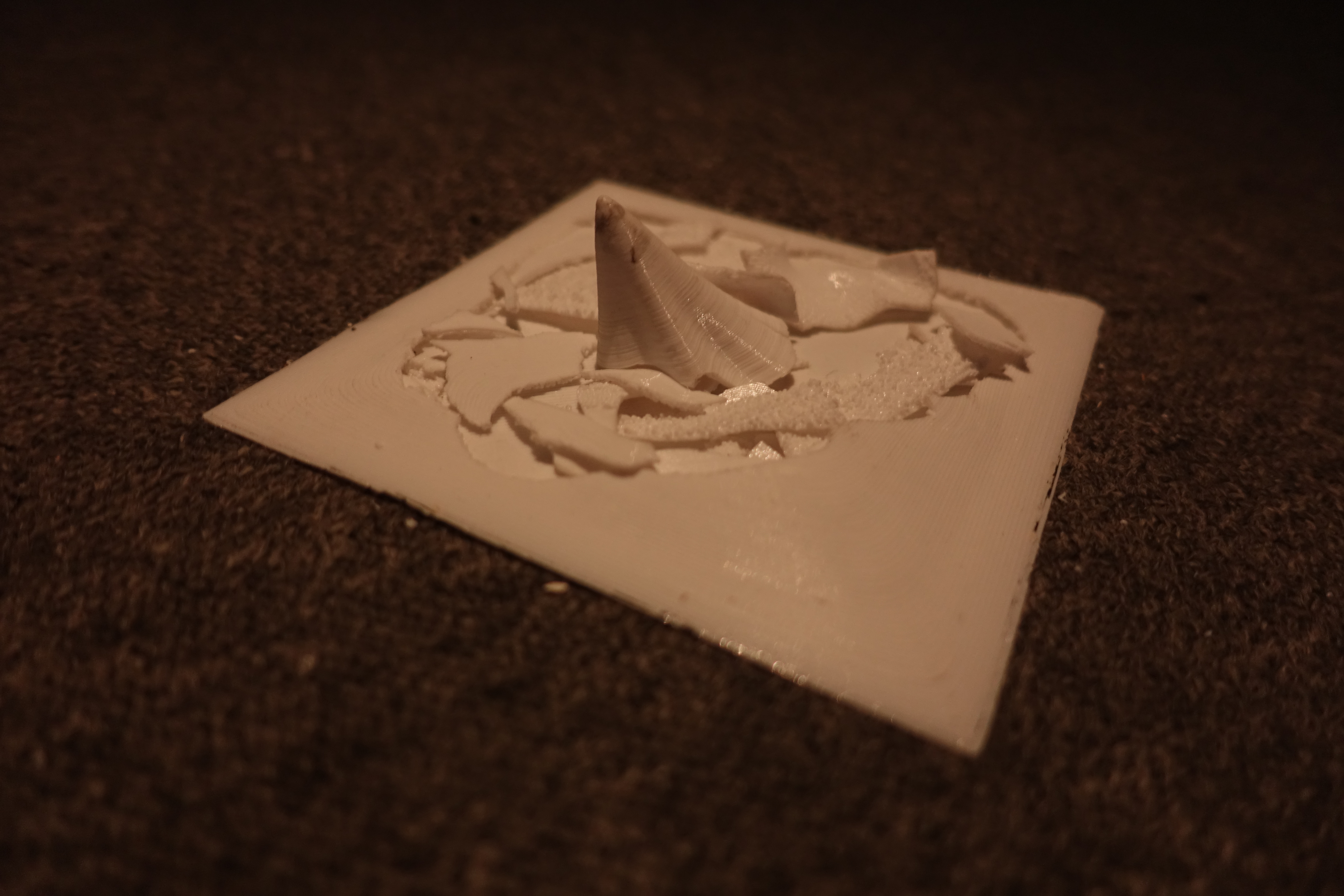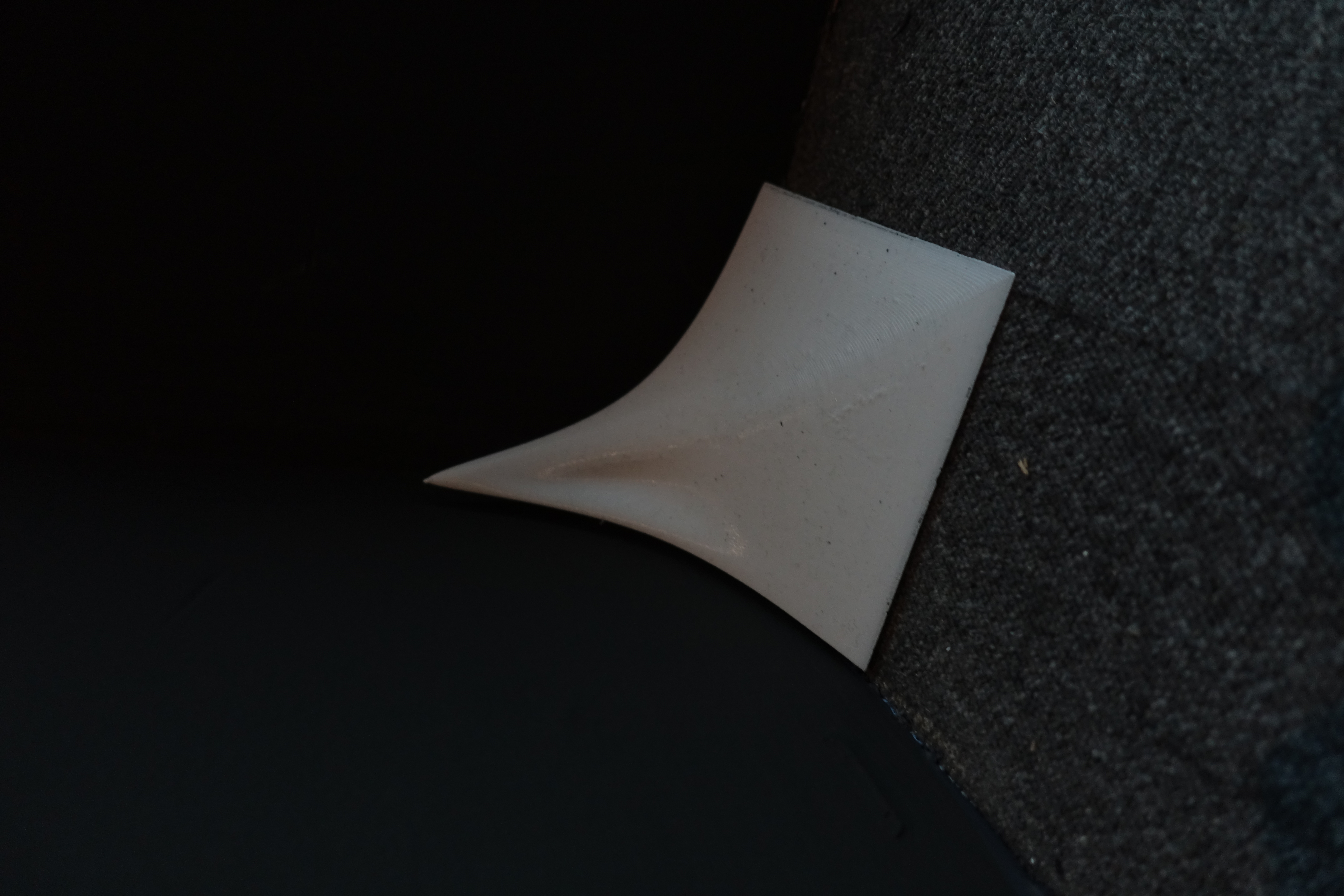吳梓寧,《魅塌域 2.0》,手機虛擬實境應用程式、3D掃描、3D列印、3D動畫、錄像投影、紙張、畫框、旋轉椅,2019。(圖片由台北數位藝術中心提供)
Tzu-Ning WU, Metaverse 2.0, mobile VR Apps, 3D scan, 3D printed objects, 3D animation, video, paper, frames, swivel chairs, 2019.(photo credit: Taipei Digital Art Center)
魅塌域(Metaverse)一詞是由meta 與universe 所組成,最早在1992 年尼爾.史蒂芬森的科幻小說《雪崩》中,用來描述網際網路世界的後繼者,一個基於虛擬實境空間卻又與現實交融的「元資訊」世界,類似今日所謂的XR(VR, AR, MR)世界。《魅塌域2.0》經過第一階段十場的「末日物件工作坊」,集結了參與者所貢獻的個人物件與末日想像,創作者將3D 掃描所得到的模型經過轉化後,擬造出結合眾人末日故事的《魅塌域2.0》末世景觀虛擬實境,邀請觀眾進入遊歷這個現世末日與未來遺跡。
The name “metaverse” is the combination of “meta” and “universe,” which was first coined by Neal Stephenson in his sci-fi novel, Snow Crash, published in 1992. It is used to describe a post-internet world that is a space of meta-information—a mixture of virtual space and reality similar to today’s XR, or cross reality (VR, AR, MR). Metaverse 2.0 is produced after ten sessions of “Doomsday Object Workshop” held in the first stage of the project and brings together personal objects and doomsday imagination contributed by the workshop participants. Transforming the models constructed with 3D scanning technology, the artist creates Metaverse 2.0, which simulates the virtual reality that features the doomsday landscape encompassing the participants’ doomsday narratives, inviting audiences to wander in this modern doomsday and the ruins of the future.
https://youtube.com/playlist?list=PLHNEQuihhFcu4MrEBNcUuU9dYWB6hBljv
台北當代藝術館展出紀錄,2019。(以下圖片皆由臺北數位藝術中心提供,版權屬於 臺北數位藝術中心,不得使用於營利用途,轉載請註明出處。)
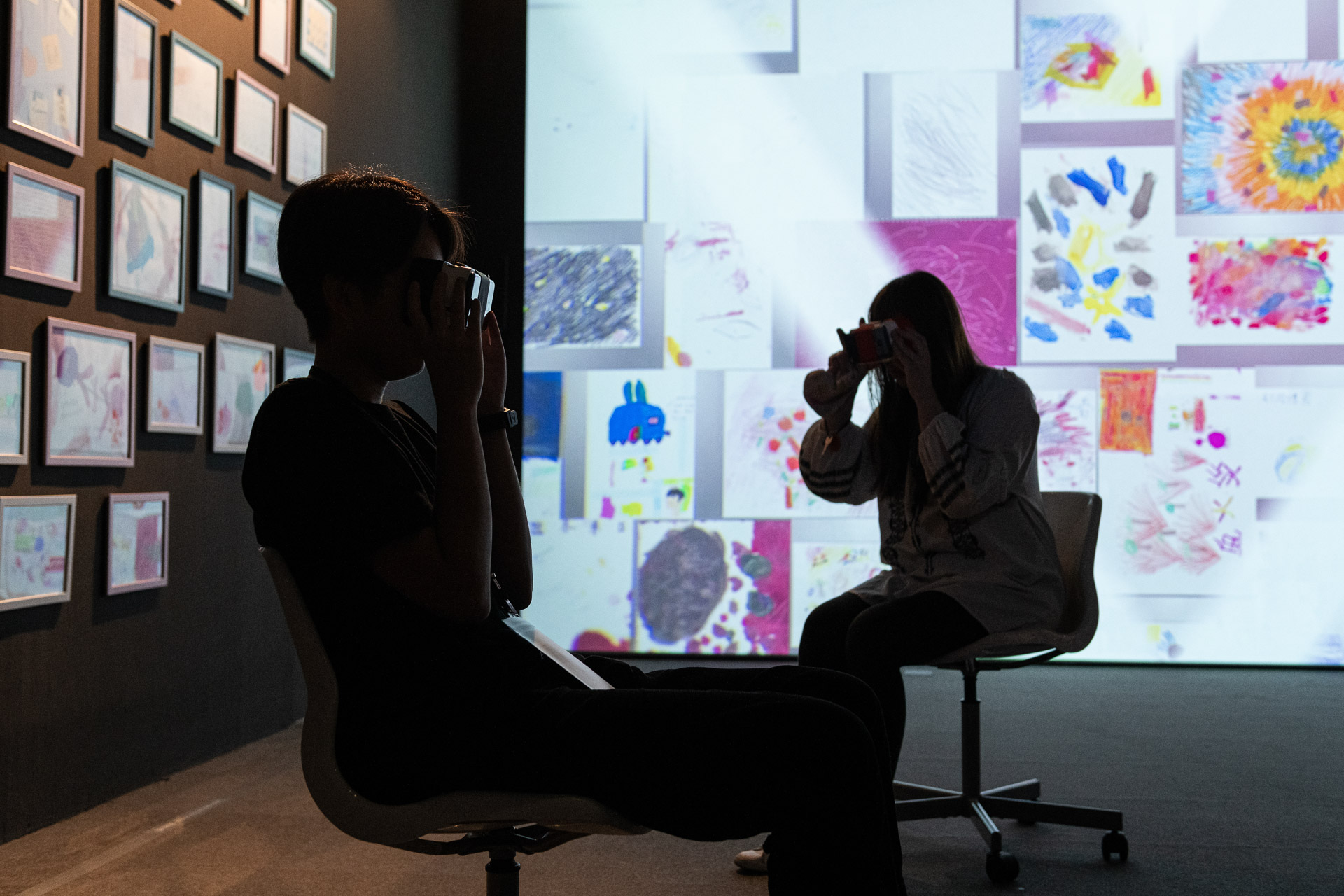
2018年開始的《魅塌域 Metaverse》正是以「世界末日」為設想前提,對「元宇宙」資本主義所提出的批判。參與者帶來的末日故事與末日物件,打著末日方舟的名號蒐集而來,但實際上透過作者轉化之後的魅塌域場景,呈現的並非科技樂觀主義的烏托邦想像,而是反烏托邦式的將這些末日物件的數位模型變成太空垃圾與廢棄物般的存在,漂流到各個擬造外星環境中成為「考古」遺跡,讓未曾參與工作坊「歷史」的觀眾在VR打造的「魅塌域」世界中遭逢這些檔案碎片,拼湊想像這些物件的來歷與前世的功能。
另外,刻意設置於《魅塌域2.0》展場的VR體驗區中央,以及展場四個角落的3D列印「末日結界」則象徵現場就是一個全像投影的介面展開,而當觀眾只顧著沈浸於Cardboard VR的世界中,就不斷輕忽現實空間中存在的人事物,而不斷被踩裂或踢飛的結界,是阻斷「沈浸」喚回「現實」的結界陷阱,而表現事不關己與卸責的態度,也就反映出另一種「現世/現實末日」的景觀。
*Mark Zuckerberg在2021年10月28日宣告將Facebook更名為Meta並致力打造3D虛擬世界的「元宇宙」(Metaverse)產業(正式更名於2022年6月9日),作者的《魅塌域》計畫比「元宇宙」風潮更早了三年以上。
The “Metaverse” project which began in 2018, is built on the idea of the end of the world and criticize capitalism within the virtual world. Participants are invited to bring their doomsday stories and objects which they would like to be saved on this “Doomsday Arks”, but in reality, the artist transforms these digital models into disused space debris and waste, floating in various synthetic alien environments as “archaeological” relics. Through VR, the audiences who never took part in the workshop can explore the world of “Metaverse 2.0” and piece together the history and past of these objects.
Furthermore, the center of the VR experience area in the “Metaverse 2.0” exhibition hall and at its four corners, the 3D printed “Doomsday Enchantment” symbolize that the scene is a holographic projection interface. When the audience becomes fully immersed in the Cardboard VR world, they ignore real-life people and objects around them. The enchantment, which is constant stepped on or kicked away, serves as a trap preventing full immersion and recalling reality. This attitude of avoiding reality and shirking responsibility also reflects another aspect of the “end of reality/end of the world” phenomenon.
*Mark Zuckerberg announced on October 28, 2021 (officially renamed on June 9, 2022) that he would change Facebook’s name to Meta and develop a 3D based virtual world “Metaverse” industry, but the artist’s “Metaverse” project was more than three years earlier before this “Metaverse” trend burst.
